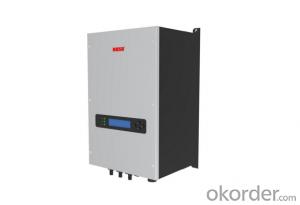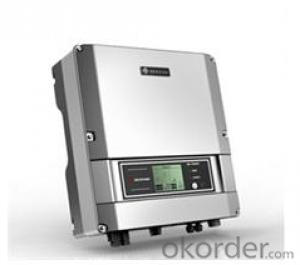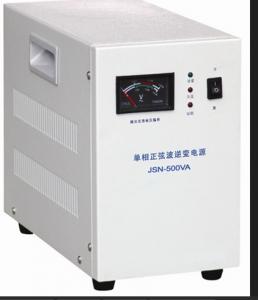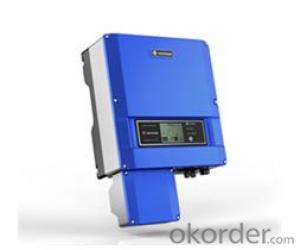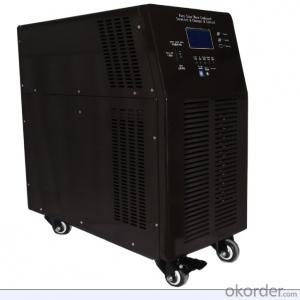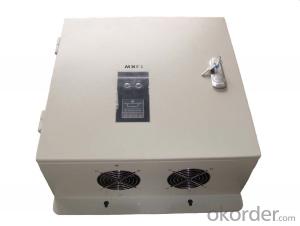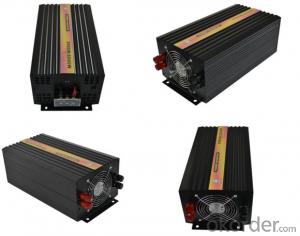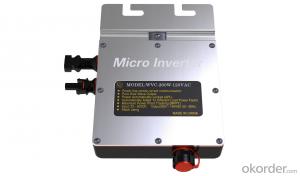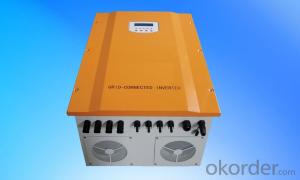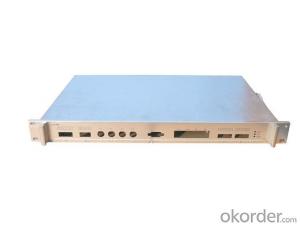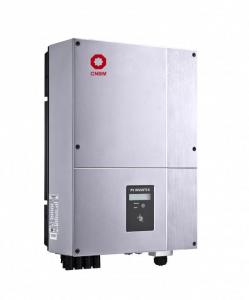1kV Solar Inverter Price - Single Phase Inverter Second Generation 1k Solar Inverter Made in China
- Loading Port:
- Shanghai
- Payment Terms:
- TT OR LC
- Min Order Qty:
- 0 watt
- Supply Capability:
- 10000 watt/month
OKorder Service Pledge
OKorder Financial Service
You Might Also Like
Description of Single Phase Inverter Second Generation Solar Inverter
Solar ac power system consists of solar panels, charge controllers, inverter and battery; Solar energy does not include inverter dc power system. Inverter is a kind of power conversion device, inverter by incentives can be divided into self-excited oscillation inverter and separately excited oscillation inverter.
Features of Single Phase Inverter Second Generation Solar Inverter
Standard 10 years warranty, 5-15 years optional
Built-in Gprs as option
Built-in Wifi as option
Smaller and lighter, only 9.6kg
High performance DSP for algorithm control
VDE-AR-N 4105 certification
New topology design
Dual MPPT design
Multi-button touch interface
LCD screen visible at night
Have anti-shading function
Advantages of Single Phase Inverter Second Generation Solar Inverter
Longer life cycle
Plug and play
Free monitoring through our webportal
Very lower internal temperature
Easy transportation and installation
Faster CPU speed
Adjustable active and reactive power
Maximum conversion effciency up to 97.7%,Euro up to 96.9%
Real-time data readable at night
User friendly operation
Technical Data of Single Phase Inverter Second Generation Solar Inverter
| Type | Omniksol-1k-TL2 |
| Input(DC) | |
| Max.PV Power | 1300W |
| Max,DC Voltage | 500V |
| Nominal DC Voltage | 360V |
| Operating MPPT Voltage Range | 80-360V |
| MPPT Voltage Range at Nominal Power | 150-360V |
| Start up DC Voltage | 90V |
| Turn off DC Voltage | 80V |
| Max, DC Current | 16A |
| Max, Short Cicuit Current for each MPPT | 20A |
| Number of MPP trackers | 1 |
| Number of DC Connection for each MPPT | 1 |
| DC Connection Type | MC4 connector |
| Output(AC) | |
| Max,AC Apparent Power | 1100VA |
| Nominal AC Power (cos phi = 1) | 1000W |
| Nominal Grid Voltage | 220V/230V/240V |
| Nominal Grid Frequency | 50Hz/60Hz |
| Max, AC Current | 5.8A |
| Grid Voltage Range** | 185-276V |
| Grid Frequency Range** | 45-55Hz/55-65Hz |
| Power Factor | 0.9 capacitive... 0.9 inductive |
| Total Harmonic Distortion(THD) | <2% |
| Feed in Starting Power | 30W |
| Night time Power Consumption | <1W |
| Standby Consumption | 6W |
| AC Connection Type | Plug-in connertor |
| Efficiency | |
| Max,Efficiency | 97.7% |
| Euro Efficiency | 96.7% |
| MPPT Efficiency | 99.9% |
| Safety and Protection | |
| DC Insulation Monitoring | Yes |
| DC Switch | Optional |
| Residual Current Monitoring Unit (RCMU) | Integrated |
| Grid Monitoring with Anti-islanding | Yes |
| Electricity Fuse Protection | Yes |
| Protection Class | Ⅰ(According to IEC 62103) |
| Overvoltage Category | PVⅡ/Mains Ⅲ(According to IEC 62109-1) |
| Reference Standard | |
| Safety Standard | EN 62109, AS/NZS 3100 |
| EMC Standard | EN 6100-6-1, EN 6100-6-2, EN 6100-6-3 EN 6100-6-4, EN 6100-3-2, EN 6100-3-3 |
| Grid Standard | VDE-AR-N4105. VDE-0126-1-1,G83/1,EN 50438,RD1699,CEI 0-21, AS4777,C10/C11 |
| Physical Structure | |
| Dimensions | 343x281x150mm |
| Weight | 9.6kg |
| Environmental Protection Rating | IP 65 (According to IEC 60529) |
| Cooling Concept | Natural convection |
| Mounting Information | Wall bracket |
| General Data | |
| Operating Temperature Range | -25℃ to +60℃(derating above 45℃) |
| Relative Humidity | 0% to 98%, no condensation |
| Max. Altitude (above sea level) | 2000m |
| Noise Type | <40dB |
| Isolation Type | Transformerless |
| Display | 3 LED ,Backlight, 4x20 Character LCD |
| Data Communication | RS485(WiFi, GRPS integrated) |
| Computer Communication | USB |
| Standard Warranty | 10 Years (5-15 years optional) |
IMages of Single Phase Inverter Second Generation Solar Inverter
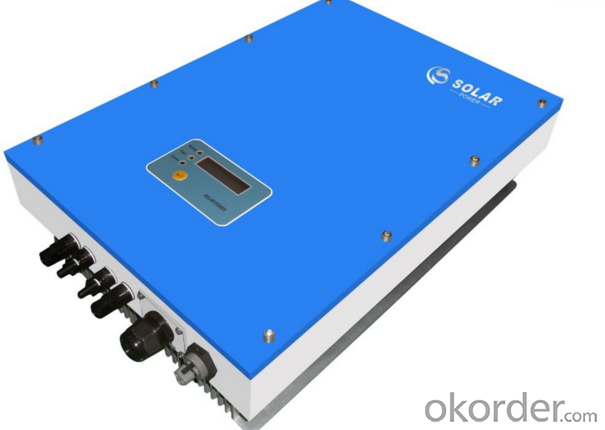
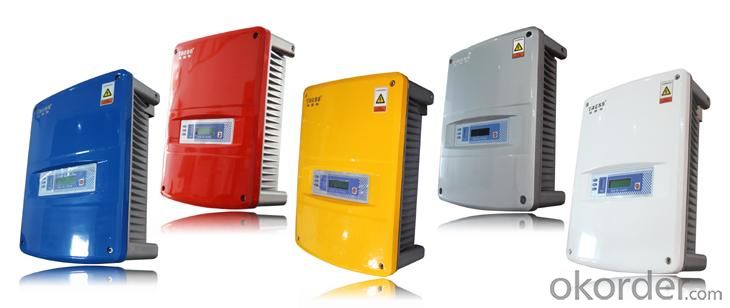
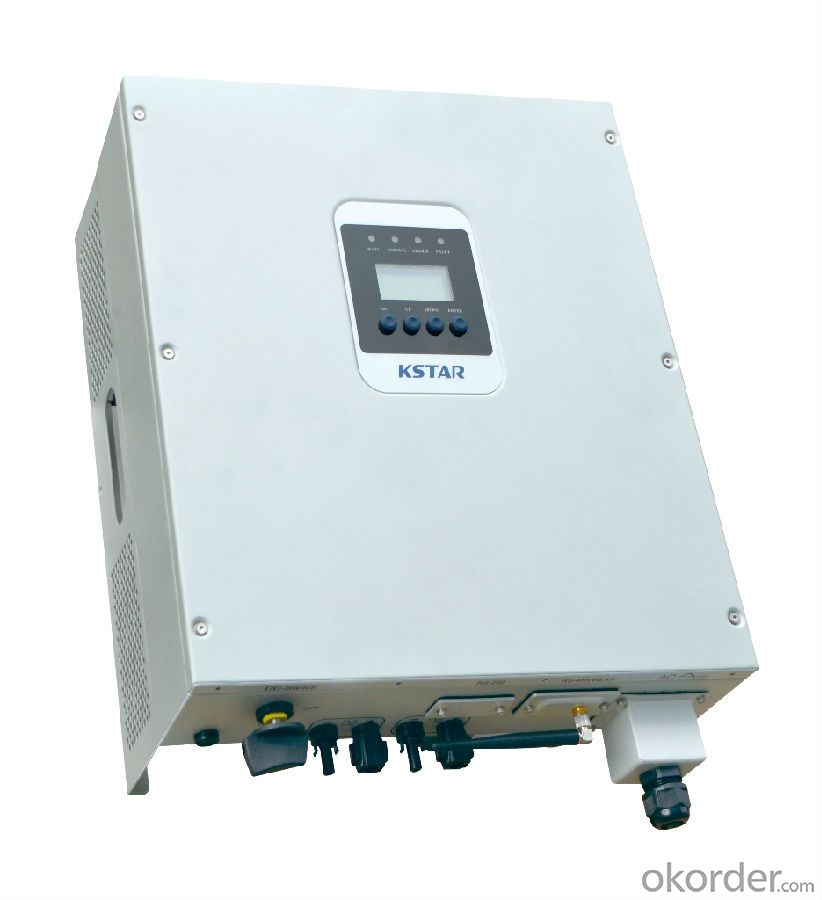
FAQ
Q: Do you have the CE, TUV, UL Certification?
A: We’ve already passed all the tests, and any certificate is available.
Q: Have you ever sold your products to companies in my country?
A: Of course, we have customers in all general PV markets, but I think we should expand our market share along with the market growth.
Q: When did your company set up? You are a new company, how can I believe your quality?
A: We entered into Solar PV industry in 2005, now we have several plants in manufacturing of a-Si and c-Si panels, and our capacity is 220MW per year. Till now we have already passed all the tests by authorized laboratories, e.g. TUV, CE, UL.
Q: Can you help us install the module if we cooperate with you?
A: We haven’t entered into installation sector, but we have the plan in near future.
Q: How do you pack your products?
A: We have rich experience on how to pack the panels to make sure the safety on shipment when it arrives at the destination.
Q: Can you do OEM for us?
A: Yes, we can.
Q: Can we visit your factory?
A: Surely, I will arrange the trip basing on your business schedule.
- Q: How does the harmonic distortion affect the performance of a solar inverter?
- Harmonic distortion can have a negative impact on the performance of a solar inverter. It can lead to increased heat generation, reduced efficiency, and can even cause damage to the inverter components. Additionally, harmonic distortion can introduce electrical noise into the system, which can affect the quality of the output waveform and potentially interfere with other connected devices. Therefore, minimizing harmonic distortion is important to ensure optimal performance and reliable operation of a solar inverter.
- Q: How is the efficiency of a solar inverter measured?
- The efficiency of a solar inverter is typically measured by dividing the output power of the inverter by the input power, and then multiplying the result by 100 to get a percentage value.
- Q: What is the role of a reactive power controller in a solar inverter?
- The role of a reactive power controller in a solar inverter is to regulate and maintain the flow of reactive power to ensure a balanced and stable electrical grid. By dynamically controlling the reactive power output, the controller helps to improve power factor, minimize voltage fluctuations, and enhance the overall system performance and efficiency of the solar inverter.
- Q: What is the maximum DC voltage that a solar inverter can handle?
- The maximum DC voltage that a solar inverter can handle varies depending on the specific model and manufacturer. However, most modern solar inverters can typically handle DC voltages up to 1000 volts or higher. It is important to consult the manufacturer's specifications and guidelines to determine the exact maximum voltage rating for a particular solar inverter.
- Q: Can a solar inverter be used with a solar-powered agricultural irrigation system?
- Yes, a solar inverter can be used with a solar-powered agricultural irrigation system. A solar inverter is responsible for converting the direct current (DC) electricity generated by solar panels into alternating current (AC) electricity that can be used to power various devices and systems, including irrigation systems. By connecting a solar inverter to the solar panels within an agricultural irrigation system, the generated solar energy can be efficiently utilized to power the irrigation pumps and other components, enabling a sustainable and environmentally-friendly solution for agricultural irrigation.
- Q: Can a solar inverter be used in conjunction with a battery management system?
- Yes, a solar inverter can be used in conjunction with a battery management system. In fact, combining a solar inverter with a battery management system allows for efficient energy storage and utilization, as the battery management system controls the charging, discharging, and overall management of the batteries, while the solar inverter converts the direct current (DC) power from the batteries into alternating current (AC) power for use in homes or businesses. This integration enables a more sustainable and reliable energy solution by maximizing the use of solar energy and providing backup power during grid outages.
- Q: How does a solar inverter handle voltage rise in case of low load conditions?
- A solar inverter handles voltage rise in case of low load conditions by reducing the power output from the solar panels. It does this by adjusting the voltage and frequency of the electricity generated, ensuring that the voltage remains within the acceptable range. This prevents any damage to the inverter or connected devices and ensures the efficient operation of the solar system.
- Q: How is the size of a solar inverter determined?
- The size of a solar inverter is determined by several factors, including the total capacity of the solar panels, the maximum power output of the panels, the desired efficiency of the system, and the specific requirements of the electrical grid or the building where the inverter will be installed.
- Q: How does a solar inverter handle voltage stability in the grid?
- A solar inverter handles voltage stability in the grid by continuously monitoring the voltage levels and adjusting its output accordingly. It maintains a stable voltage by regulating the power output from the solar panels and injecting or absorbing reactive power as needed. This helps to stabilize the grid voltage and prevent fluctuations that can disrupt the operation of electrical devices and appliances connected to the grid.
- Q: How does a solar inverter handle voltage flicker in the grid?
- A solar inverter handles voltage flicker in the grid by continuously monitoring the grid voltage. When it detects a flicker, it adjusts its output power accordingly to stabilize the voltage and maintain a consistent power supply to the connected loads. This helps prevent disruptions and ensures a smooth operation of the grid.
Send your message to us
1kV Solar Inverter Price - Single Phase Inverter Second Generation 1k Solar Inverter Made in China
- Loading Port:
- Shanghai
- Payment Terms:
- TT OR LC
- Min Order Qty:
- 0 watt
- Supply Capability:
- 10000 watt/month
OKorder Service Pledge
OKorder Financial Service
Similar products
Hot products
Hot Searches
Related keywords
